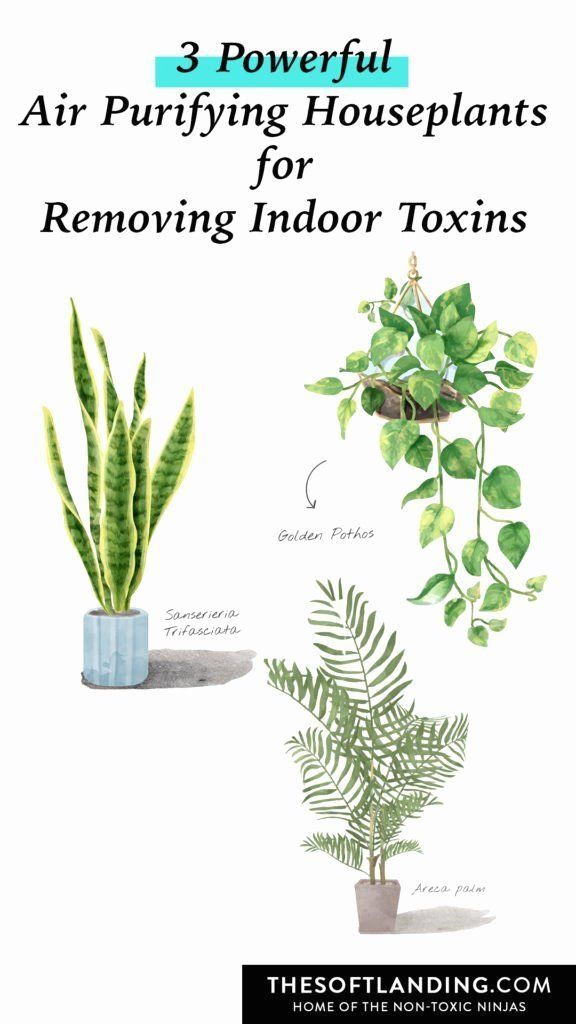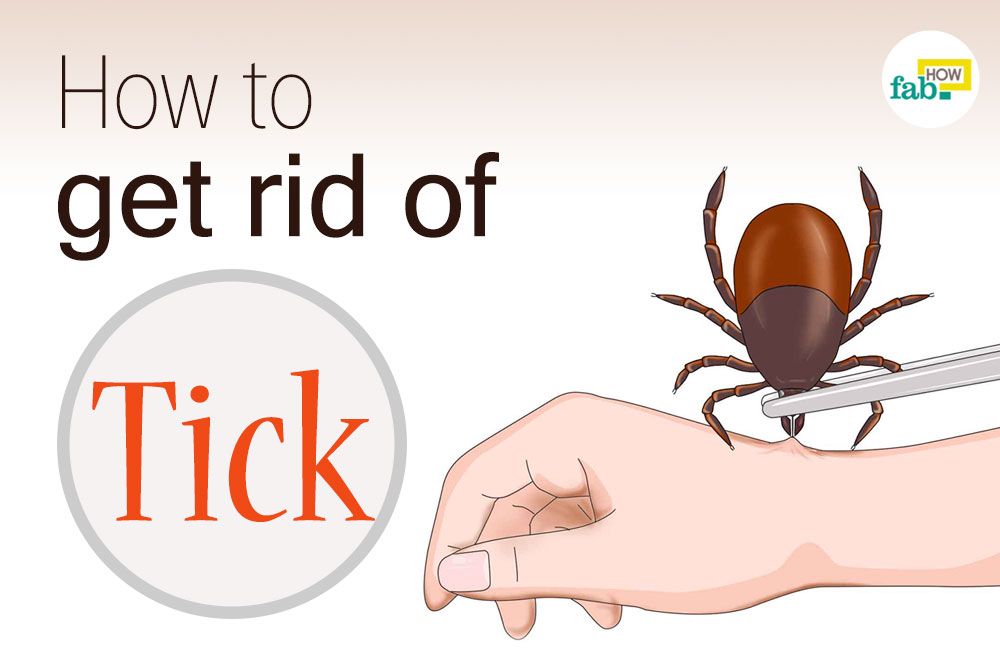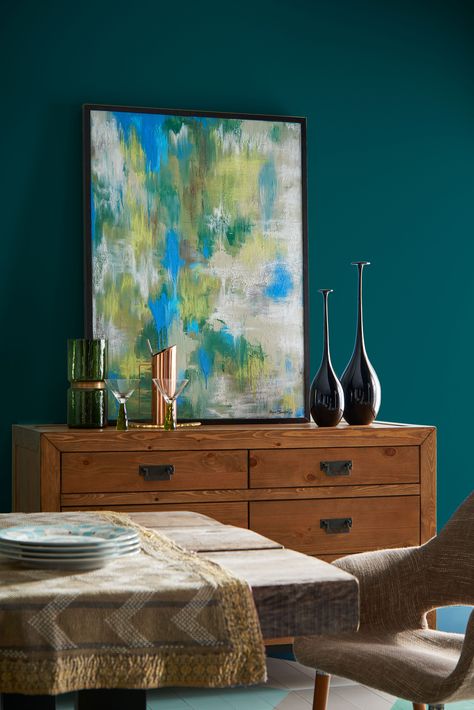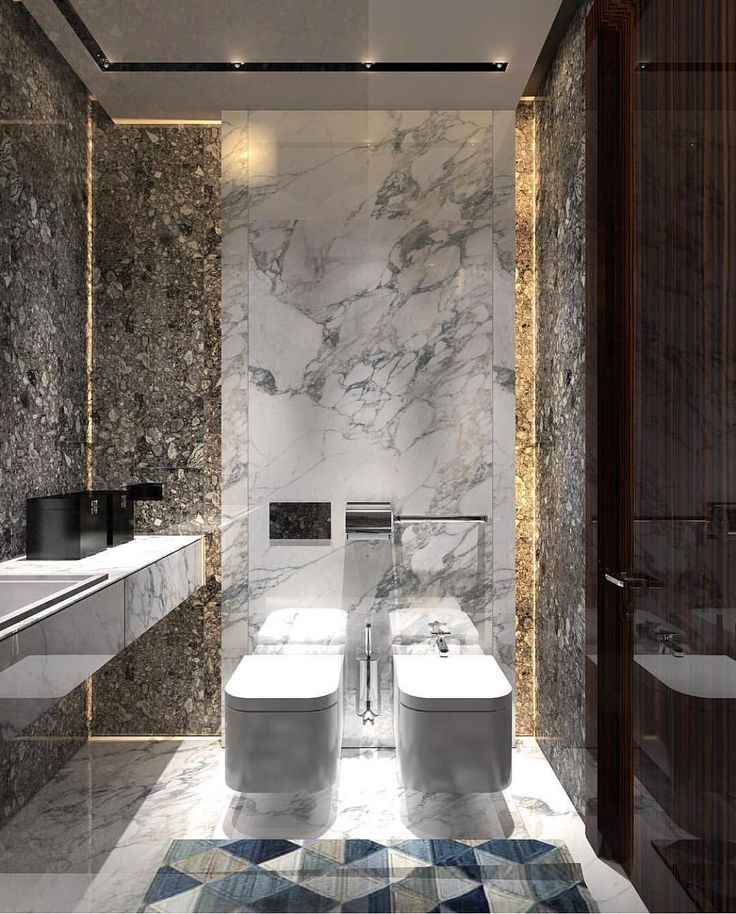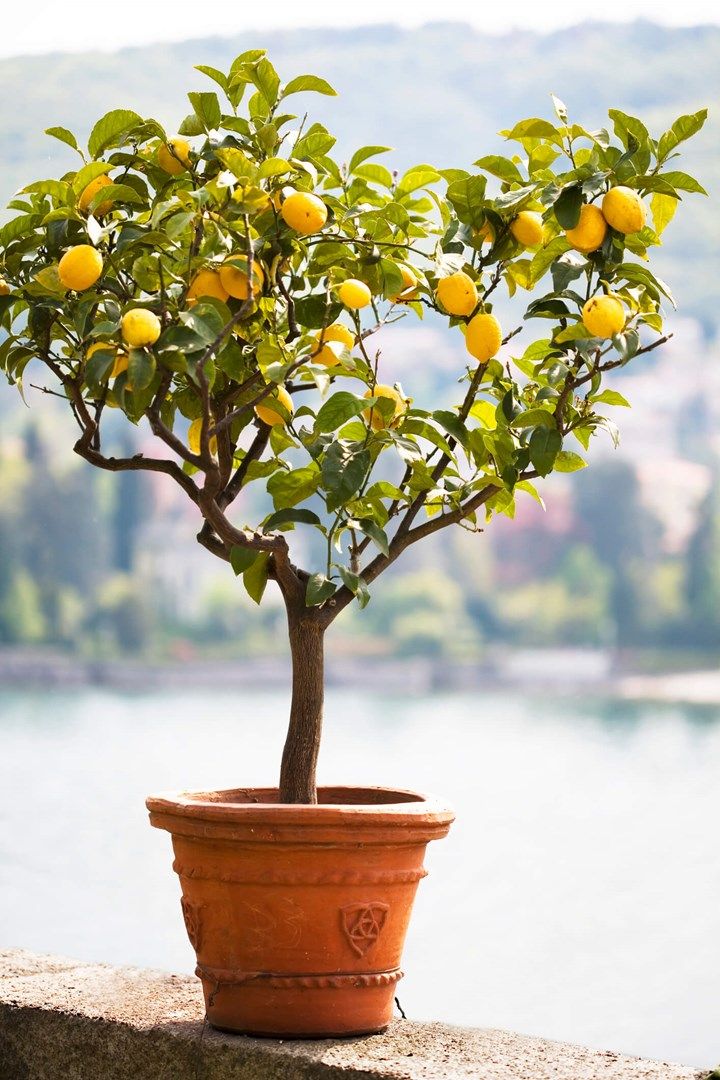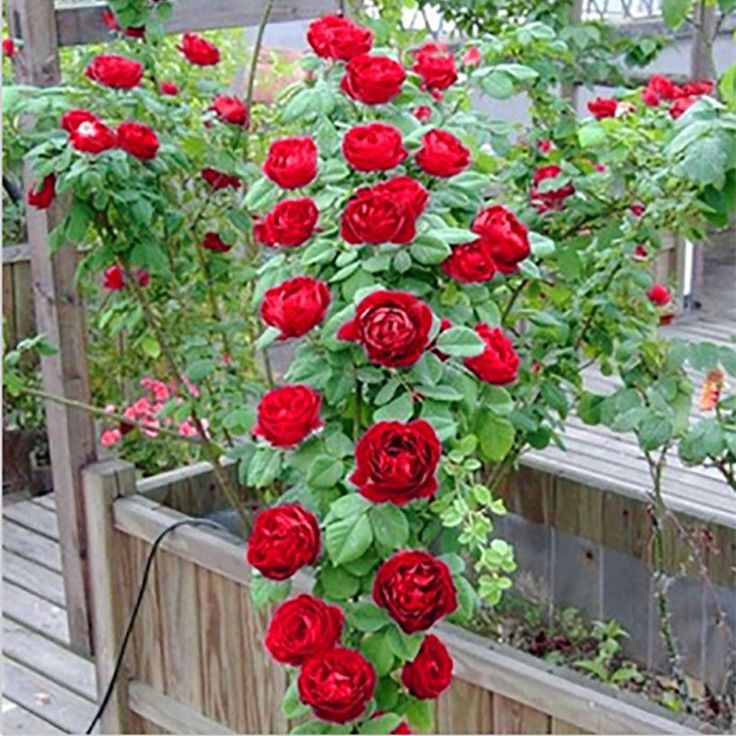Indoor air purifier plants
10 ways to keep a home fresh |
(Image credit: Getty Images)
It's easy, with a little know-how, to bring air cleaning indoor plants into your home to keep you happy and healthy. With so many tempting plants on offer, making decisions can be tricky. But did you realize that some possess extra air purifying qualities? Knowing which ones absorb harmful toxins can help narrow down your wish list as well as making your home more restful and inviting.
One well-known study regarding indoor plants and air quality was conducted by NASA in 1989. Scientists were studying natural ways to purify the air in enclosed spaces, such as space stations, and today this has led to further insight into how particular plants can benefit our homes.
Best air cleaning indoor plants
Together with expert tips, our guide will inform you of everything you need to know, including where to position and how to care for air purifying plants. Many of these options make great additions as kitchen plants due to their air purifying properties.
1. Bird’s nest fern
(Image credit: Alamy)
A true stylish beauty, these crinkly leaved ferns are great air cleaning indoor plants, purifying the air of formaldehyde, often found in new flooring and wall coverings. With glossy lime green fronds growing in rosettes, they make a striking statement on a shelf or bathroom windowsill as a bathroom plants, but will need up to 2ft (60cm) to splay out as they mature.
Coming from the forests of Asia and Australasia these plants grow in the tops of trees and are used to varying light conditions from bright and airy to semi shade. What they do need though is moisture, so a spot in a humid shower room or ensuite is definitely their happy place. Mist every other day, particularly if they live in a dryer room but only water if the top inch of soil is dry. Room temperatures between 65-75ºF (18-24ºC) are ideal, avoid places below 55ºF (13ºC).
2. Areca palm – or bamboo palm, butterfly palm
(Image credit: Alamy)
Elegance personified, these are the graceful arcing palms that adorned Art Deco hotel foyers, tea rooms and danced halls. Native to Madagascar, they have distinctive smooth tipped branches and naturally cast a beautiful, dappled light. Thanks to these broad leaves, this plant – along with many other types of palm – excels at removing mold spores and ammonia (often found in household cleaning products) from the air, making it perfect for bath and shower rooms.
Native to Madagascar, they have distinctive smooth tipped branches and naturally cast a beautiful, dappled light. Thanks to these broad leaves, this plant – along with many other types of palm – excels at removing mold spores and ammonia (often found in household cleaning products) from the air, making it perfect for bath and shower rooms.
‘This house plant likes bright light that is filtered,’ says Mark Lawlor of Happy Houseplants . ‘This is because too much sun can lead to scorching the leaves. Best practice is to place the Dypsis Lutescens near a south or west-facing window with plenty of bright, indirect sunlight.’ Thriving at temperatures around 65-75°F (18-24°C) make sure the palm is clear of any drafts or radiators which can cause stress.
A little fussy when it comes to watering, palms tend to prefer distilled or rainwater – as the fluoride in mains tap water can cause the leaves to crisp and turn brown. Water the soil regularly but ensure that it is allowed to dry out in between.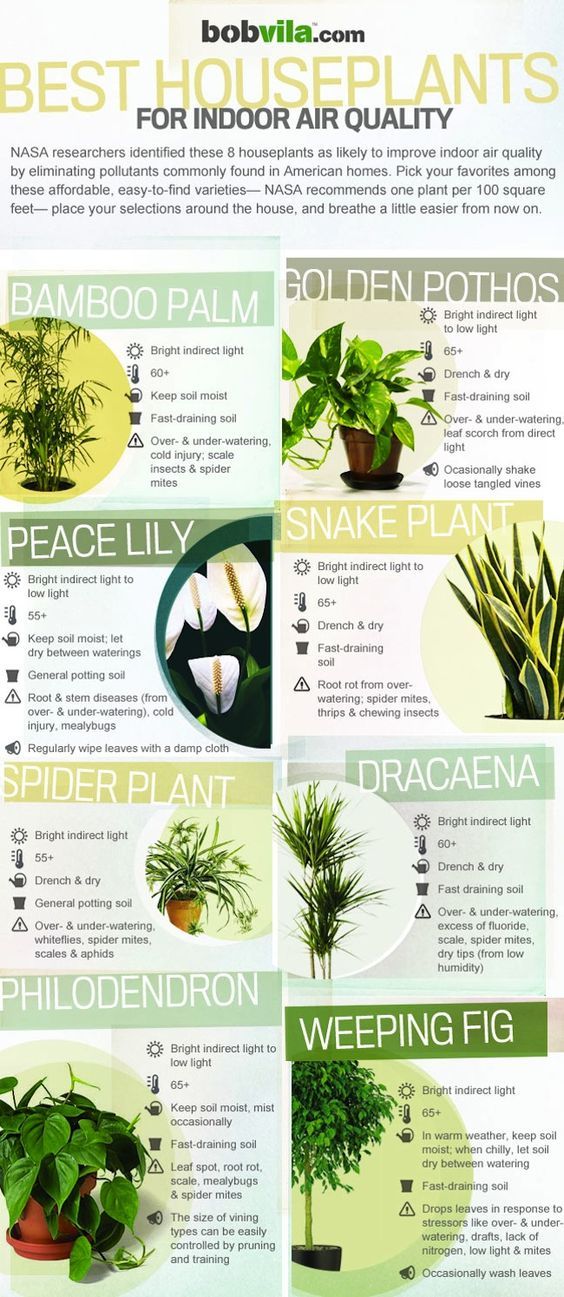 Also ensure that there is good drainage as these tropical plants are prone to root rot if left standing in water.
Also ensure that there is good drainage as these tropical plants are prone to root rot if left standing in water.
3. Spider plant – or Hen and Chickens, ribbon plant
(Image credit: Getty Images)
A classic air cleaning indoor plant, the spider plant's benefits are numerous so it’s hard to imagine any home not having one of these striped leaved beauties tucked away somewhere. But more than just an easy-to-grow favorite, these plants are formidable at removing formaldehyde, toluene and xylene all chemicals found in many synthetic fabrics, paints and glues. They have also been proved to lower carbon monoxide levels too.
Favoring temperatures between 55 and 80°F (13–27°C), Spider plants are one of the easiest and most tolerant indoor plants you can grow, even coping with artificial light, just keep them away from strong, direct sunlight which will crisp the leaves.
Water regularly during the spring and summer growing period and occasionally through fall and winter. Plant up in pots and place on a high shelf or windowsill or display in hanging planters. Unlike many other indoor plants, they are also non-toxic for pets too.
Plant up in pots and place on a high shelf or windowsill or display in hanging planters. Unlike many other indoor plants, they are also non-toxic for pets too.
4. Dragon plant - Dracaena
(Image credit: Getty Images)
One of the most effective plants for absorbing trichloroethylene – a major VOC – the dragon plant is also extremely handsome and perfect for making a lush and bold leafy statement. Perhaps one of the easiest indoor plants to grow, it can live for decades if well cared for.
Preferring semi-shade, these well-natured plants come in all shapes and sizes, and colours. From tall glossy green corn stalk plants to the Dracaena bi-color with its pink and white edged green leaves, they make striking and individual statement plants. With some varieties growing up to 10ft high, these plants prefer semi shade and are happy in temperatures of 60-70°F (16-24°C). This plant can survive lower temperatures (as low as 50°F or 10°C), but the leaves will suffer, usually turning yellow.
Dragon plants don’t tend to cope well with mains tap water due to the added chemicals, so use a distilled or harvested rainwater instead. Aim to keep the soil moist but not waterlogged and mist frequently with warm water.
5. English ivy
(Image credit: Alamy)
Quick to grow and happy in most spots around the house, regardless of temperature or light conditions, English or European ivy is a real winner. It’s attractive, trailing stems of distinctive evergreen leaves are particularly effective at reducing airborne toxic chemicals.
The team at The Joy of Plants say: ‘Ivy removes trichloroethylene and benzene from the air and is especially good at removing formaldehyde; a substance that occurs in almost all indoor environments (such as chipboard, furniture and textiles).’
Its foliage has also been shown to help reduce mold, making it a useful plant for damp spaces such as an ensuite or bathroom.
Performing best in direct sunlight, well drained soil and with plenty of water it will make a stunning statement draping down from a shelf or hanging planter. Keep at a steady temperature of between 52-71°F (11-22°C) for healthy growth.
Keep at a steady temperature of between 52-71°F (11-22°C) for healthy growth.
Ivy is also excellent as a bedroom plant, either trailing over a bedside table, or hanging from a hanger placed above the bed.
6. Money plant – Pilea peperomioides
(Image credit: Alamy)
With its flat, green circular leaves that can grow as big as 5in (15cm) across, the Chinese money plant is instantly recognizable. One of the most effective indoor plants for air purification they are particularly effective at reducing levels of harmful chemicals found in carpets, paints, glues and manmade fabrics.
A member of the stinging nettle family, this unusual plant can grow up to 16 inches (40 cm) high and loves a light spot, away from strong sunlight. Water when the soil is dry to the touch and feed monthly with a liquid feed during spring and summer.
Although largely unfussy, these plants don’t like temperatures that dip below 50°F (10°C) so aim to keep them between a comfortable 55-86°F (13-30°C).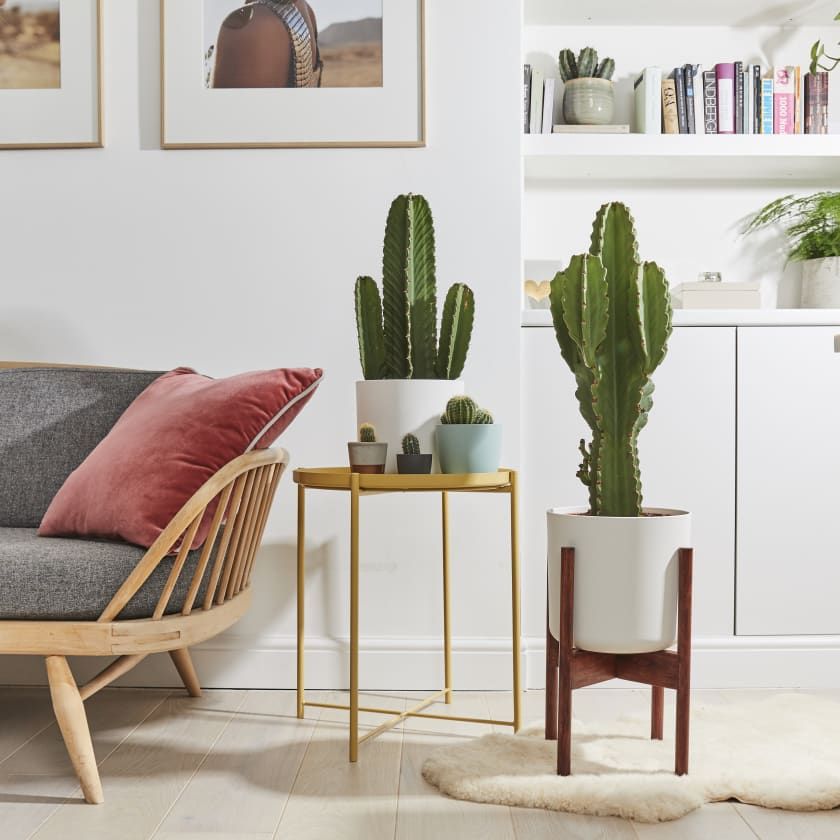 Be sure to turn a Chinese money plant regularly to maintain a balanced and attractive shape and don’t worry if it sheds its lower leaves, as this is entirely normal.
Be sure to turn a Chinese money plant regularly to maintain a balanced and attractive shape and don’t worry if it sheds its lower leaves, as this is entirely normal.
7. Weeping fig – Ficus
(Image credit: Alamy)
Slow growing with a mass of glossy leaves, these indoor trees are not only ideal for adding impact and interest to an empty corner but are brilliant air cleaning indoor plants, too. Filtering harmful formaldehyde, xylene and toluene and replacing them with oxygen, they are a great addition to busy kitchens, living areas and home offices.
Reaching from 3ft to 10ft (90-304cm) they like a bright spot with plenty of space to spread their arching branches. They are a little diva-ish though as they dislike being moved around or disturbed, dropping their leaves in protest, so carefully assess the perfect spot before homing your plant. They do tend to grow towards the light, so turn regularly to maintain a balanced, even shape.
A steady room temperature of around 60°F (16°C) is perfect for these plants but do avoid cold drafts and areas that dip below 55°F (13°C) as this will lead to leaf drop.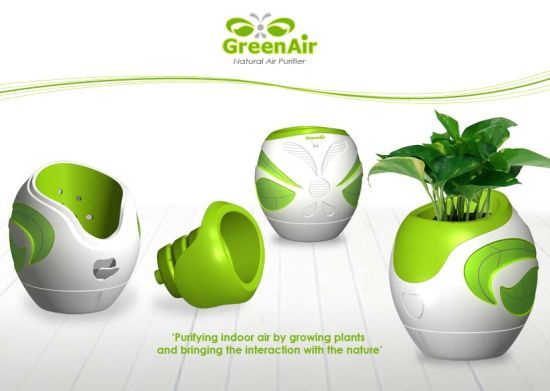 Over watering is the main problem with weeping figs as they hate sitting in puddles. Only water when the top inch of the compost is bone dry and use tepid water to avoid shocking the plant. Feed fortnightly with a liquid feed during spring and summer and, for mature plants, top up compost levels annually. It’s worth knowing that these plants can be toxic to some pets, so maybe worth avoiding if you have curious pets.
Over watering is the main problem with weeping figs as they hate sitting in puddles. Only water when the top inch of the compost is bone dry and use tepid water to avoid shocking the plant. Feed fortnightly with a liquid feed during spring and summer and, for mature plants, top up compost levels annually. It’s worth knowing that these plants can be toxic to some pets, so maybe worth avoiding if you have curious pets.
8. Snake plant or Mother in Law’s Tongue
(Image credit: Alamy)
It may not appear to be the most restful plant to have in a bedroom, but sansevieria is one of a few plants that continues produce oxygen in near dark conditions. It’s also very effective at eliminating airborne formaldehyde, nitrogen oxide, benzene, xylene and trichloroethylene, all chemicals that can often be found in synthetic carpets, glues, paint and other interior fittings.
With its twisting sword-like leaves and stripy markings, it makes this plant the perfect showstopper for a side table, windowsill or neat corner. Tough and extremely drought tolerant, they are relatively slow growing, and can cope with low light conditions but will grow faster in brighter positions.
Tough and extremely drought tolerant, they are relatively slow growing, and can cope with low light conditions but will grow faster in brighter positions.
Native to west Africa these plants can stay outside in HDSA zones 9-12. They will die though if left in temperatures below 50°F or exposed to frost. Water once a week during spring and summer but do drop to once a month in fall and winter when the plant is dormant.
There are plenty of different varieties of snake plant to choose from, including dwarf varieties such as Sansevieria fischeri at 16 inches (40cm) up to 3-4ft (91-121cm) for Masoniana and trifasciata types.
The experts at Patch Plants suggest, ‘Every now and again – just whenever you remember – give her leaves a light wipe to keep her pores free of dust.’
9. Aloe vera
(Image credit: Alamy)
A superstar amongst indoor plants, aloe vera is not only striking to look at and blessed with healing properties, but it can help purify the air too. A great absorber of VOCs often found in newly laid flooring, paint and glue, it takes in carbon dioxide and produces oxygen at night making it ideal for bedrooms in particular.
A great absorber of VOCs often found in newly laid flooring, paint and glue, it takes in carbon dioxide and produces oxygen at night making it ideal for bedrooms in particular.
The fleshly leaves store water so they can happily cope with less than regular watering, but what they do need is constant warmth. Preferring room temperatures of 50-85°F, these natives of the Arabian Peninsula must be kept clear of cold drafts and frost. They can grow outside in HDSA zones of 8-11, but in exposed or marginal areas it may be better to plant in a pot and move inside and out as the temperatures dictate.
Pot up with succulent and cacti compost and feed with a specialist liquid feed weekly during spring and summer.
10. Peace lily
(Image credit: Alamy)
With its glossy tear shaped leaves and pure white flowers, the peace lily is one of the most popular house plants, and is a great air cleaning indoor plant. Effortlessly chic, they radiate tranquillity and simplicity, but also break down and neutralize toxic household gases like benzene, formaldehyde, and carbon monoxide.
This plant reaches around 30in high (75cm) and will thrive in temperatures 64-75°F (18-24°C) but can cope with lows of 53°F (12°C). Loving a humid and bright spot – but away from direct light which can scorch the deep green leaves – these plants are particularly well suited to a steamy kitchen, bathroom or shower room.
Preferring moist soil, these plants will tell you when they are thirsty as the leaves will droop. Pop it next to the shower for the occasional boost or mist with a water spray. Feed with a liquid feed fortnightly during spring and summer.
What is the best air purifying indoor plant?
Chrysanthemums (below) are the most effective plant at cleansing the air. Eliminating common VOCs such as formaldehyde, xylene, benzene it can also absorb ammonia which is present in many household cleaners and floor sealers. Unusually it’s the flowers that extract the chemicals from the air, so you may need to replace regularly or rotate a few plants while old blooms fade, and new buds emerge.
(Image credit: Alamy)
How many plants does it take to purify the air in a room?
According to the 1989 Nasa study on Interior Landscape plants for indoor air pollution abatement, author B.C. Wolverton recommends having at least two ‘good sized’ plants per 100 sq ft (9.2 sqm) of indoor space. Suggested plants include Golden pothos (below), Boston Fern and Weeping Fig.
(Image credit: Jake Curtis)
Where to buy air plants?
You can buy air cleaning indoor plants at your local nursery; ask for guidance if you need help. Otherwise, shop online for the best places to buy plants. These include:
- Amazon air plants
- Bloomscape air plants
- Burpee
- Etsy air plants
- Home Depot's Garden Center
- Lowe's air plants
- The Sill air plants
- Walmart air plants
You can buy indoor low light plants at your local nursery; ask for guidance if you need help.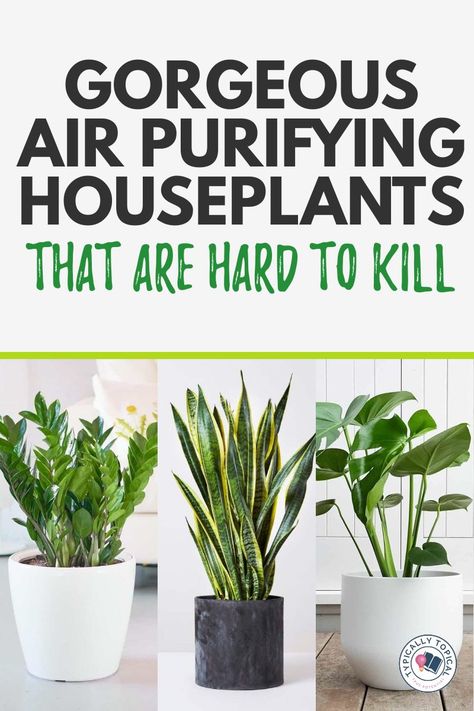 Otherwise, shop online for the best places to buy plants. These include: Lowes Garden Center , Home Depot's Garden Center and Burpee for the best buys.
Otherwise, shop online for the best places to buy plants. These include: Lowes Garden Center , Home Depot's Garden Center and Burpee for the best buys.
You can buy indoor low light plants at your local nursery; ask for guidance if you need help. Otherwise, shop online for the best places to buy plants. These include: Lowes Garden Center , Home Depot's Garden Center and Burpee for the best buys.
Jill Morgan has spent the last 20 years writing for Interior and Gardening magazines both in print and online. Titles she has been lucky enough to work on include House Beautiful, The English
Home, Ideal Home, Modern Gardens and Gardeningetc.com. Although much of her career has involved commissioning and writing about reader homes and home improvement projects, her
everlasting passion is for gardens and outdoor living, which is what she writes about for Homes & Gardens.
21 Best Air-Purifying Plants for Your Health and Better Indoor Air Quality
Cielo
Updated January 4, 2022
21 mins read
Worried about indoor air quality as pollution and CO2 levels rise? Indoor air purifying plants are a pretty cool solution that not only remove toxins but also add a spark to your room’s ambiance!
It’s no secret that plants keep the air fresh and clean. However, some house plants have additional air-purifying benefits making them a popular addition to home and office designs. While aiding your home’s HVAC system, plants help boost your mood and productivity. Besides they also aid in reducing stress!
However, some house plants have additional air-purifying benefits making them a popular addition to home and office designs. While aiding your home’s HVAC system, plants help boost your mood and productivity. Besides they also aid in reducing stress!
But is it proven if plants actually purify the air? Which air-purifying plants are the best? How many air-purifying indoor plants would be enough to keep your air clean?
Read on to find answers to all your questions.
Do Plants Purify Air?
Air-purifying indoor plants have been all the rage ever since a 1989 NASA study championed the air-purifying benefits of houseplants. The study revealed that plants have the ability to reduce indoor air pollutants.
There is no doubt that plants can remove volatile chemical toxins from the air. Still, some critics claim that houseplants make a negligible difference in improving the cleanliness levels of indoor air. The reason is that even though plants are continuously cleaning the air, the process is too slow in reality to make any significant difference.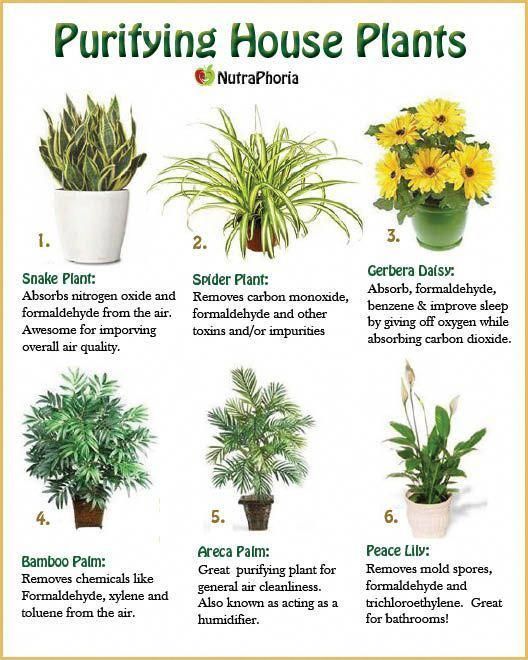
Therefore, you need a high concentration of house plants to purify the air inside your house. Just a handful won’t cut it. Some researchers claim that it would take 93 plants per square foot to compete with a building’s ventilation system!
So does that mean you shouldn’t bother with air-purifying houseplants at all? Not quite.
Another study conducted a practical experiment in offices shows that potted plants provide an efficient, automated system for indoor air pollution. This compliments other engineering measures to help reduce the intensity. Further studies also back up Nasa’s original findings claiming that certain plants certainly can at least complement ventilation systems. Hence, decreasing the level of air pollution.
While keeping a few houseplants alone won’t purify the air significantly, they still have a host of other benefits, making them worthwhile.
Benefits of Air Purifying Indoor Plants
Indoor plants have been found to significantly reduce stress levels. Moreover, they are therapeutic for people with depression and anxiety. Medical Clinics in Manchester, England, have taken the initiative to prescribe plants to patients with depression or anxiety.
Moreover, they are therapeutic for people with depression and anxiety. Medical Clinics in Manchester, England, have taken the initiative to prescribe plants to patients with depression or anxiety.
In addition, CEOs and managers might be pleased to hear that employees who work around natural elements such as indoor plants are significantly more satisfied and committed to their organization. Some of them are also used as humidity absorbing plants hence decreasing the chances of mold production.
Here is a summary of the indoor air purifying benefits of plants, making the decision to include them in your home a no-brainer!
- Maintain home humidity levels
- Maintain home temperature
- Reduce carbon dioxide
- Remove certain pollutants from the air
- Reduce dust from the air
How Do Plants Purify Air?
The ability of plants to detoxify the air is extraordinary. While leaves absorb carbon dioxide and light, converting them into energy through photosynthesis, they also absorb volatile organic compounds (VOCs) from the air.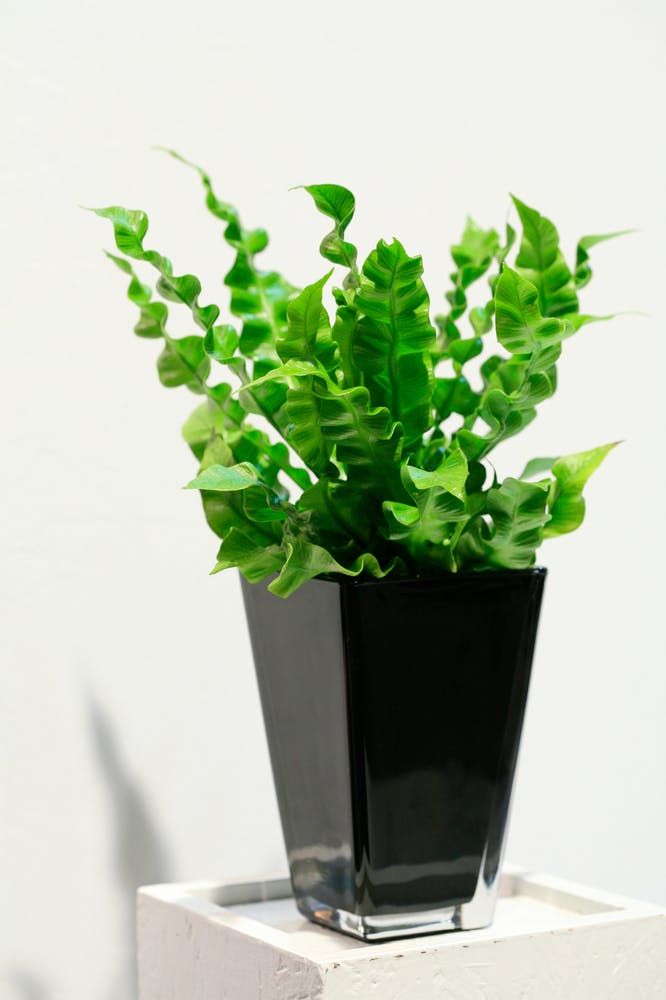 Thus, the leafier the plant, the more toxins it will be able to absorb.
Thus, the leafier the plant, the more toxins it will be able to absorb.
Oxygen is a valuable byproduct of this process. Plants remove harmful pollutants increasing oxygen content, something no commercial air purifier can do.
Common Indoor Pollutants
While your home is your safe haven, your indoor air can be more toxic than outdoor air.
Unknowingly we bring in various contaminants making indoor air pollution a legitimate health and environmental concern. Not all are very harmful, but high concentrations can cause dizziness or allergies.
VOCs such as formaldehyde in beauty products or toluene in paints are some common indoor air pollutants. Here are some more that you can diminish with the help of air purifying house plants and air purifiers:
- Formaldehyde: Commonly used in building materials, high levels of formaldehyde are associated with an increased risk of certain rare cancers. The general public is exposed to formaldehyde by absorbing liquids containing formaldehyde (cleaning products, etc.
 ) through the skin or by inhaling formaldehyde present in the air due to tobacco smoke, automobile tailpipe emissions, etc.
) through the skin or by inhaling formaldehyde present in the air due to tobacco smoke, automobile tailpipe emissions, etc. - Benzene: A widely used industrial chemical, benzene is found in crude oil and is used to make plastics, resins, synthetic fibers, glues, adhesives, cleaning products, and detergents, etc. Long-term benzene exposure is linked to an increased risk of leukemia and anemia.
- Toluene: Found naturally in crude oil, toluene is present in paints, lacquers, glues, and nail polishes. Though exposure to moderate levels of toluene is harmless, high levels of toluene can cause dizziness, loss of coordination, insomnia, etc.
- Xylene: Widely used in the petroleum and wood processing industries, exposure to xylene can cause eyes, nose, and throat irritation, headaches, dizziness, and loss of muscle coordination.
- Trichloroethylene: Found in consumer products such as paint removers, adhesives, spot removers, and rug cleaning fluids, trichloroethylene is associated with central nervous system problems such as blurred vision, facial numbness, and confusion.
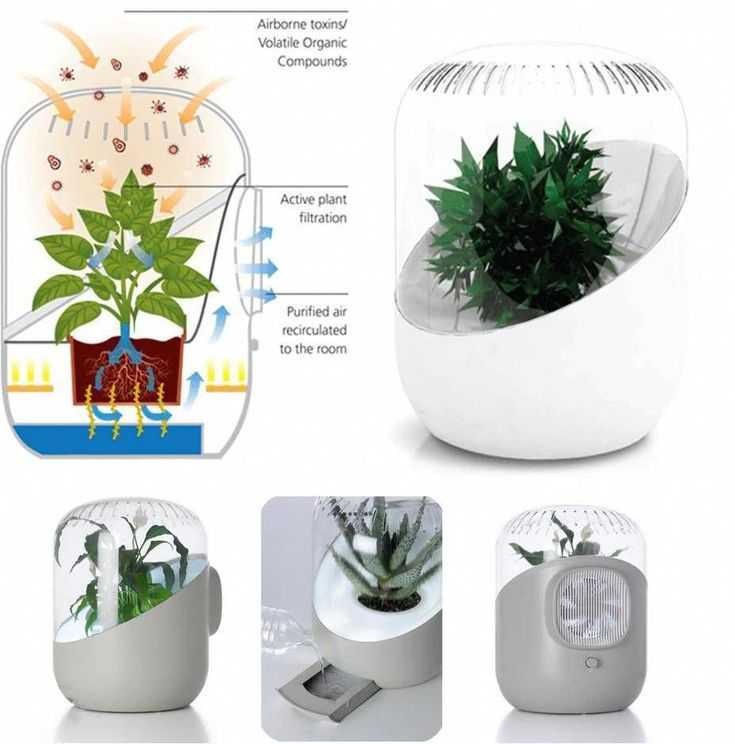 There is also increasing evidence that trichloroethylene is human carcinogenic.
There is also increasing evidence that trichloroethylene is human carcinogenic.
21 Best Air Purifying Plants
While air purifying plants cannot instantly filter your home atmosphere like a mechanical ventilation system or an air purifier, they certainly can aid the process with their marvelous air cleaning abilities.
Not all plants are the same; here is a roundup of some of the best air purifying house plants that you can utilize for a toxin-free indoor environment:
1. English Ivy (Hedera Helix)
English ivies are one of the best air-purifying plants, according to a NASA study. They can remove toxins like formaldehyde, benzene, xylene, and toluene. Some studies also claim they can reduce mold and fecal matter in the air. Hedera helix also absorbs humidity and can be helpful in maintaining your ideal summer humidity levels.
Maintenance Tips: English ivies do need a lot of bright but indirect sunlight. They love humidity and cooler temperatures in the 60s range. Let the top of the soil dry to the touch before watering them again. Keep in mind that English ivies are considered an invasive species in many parts of the world as they are very fast growing. Trim them regularly so they don’t take over your walls.
Let the top of the soil dry to the touch before watering them again. Keep in mind that English ivies are considered an invasive species in many parts of the world as they are very fast growing. Trim them regularly so they don’t take over your walls.
Toxicity: Unfortunately, this amazing plant is not pet safe. A toxin found in the leaves and berries can be hazardous to both children and animals if eaten.
2. Bamboo Palm (Chamaedorea Seifrizii)
Belonging to the Chamaedorea genus with over 100 species to choose from, the bamboo palm is another popular air-purifying houseplant. The most popular species considered to be the bamboo palm is the chamaedorea seifrizii.
Maintenance Tips: Bamboo palms are low-maintenance plants, thus perfect for beginners. They dislike direct sunlight and overwatering. 1-3 waterings a week are more than enough.
Toxicity: These fantastic plants are pet-friendly, so you don’t have to worry about their placement.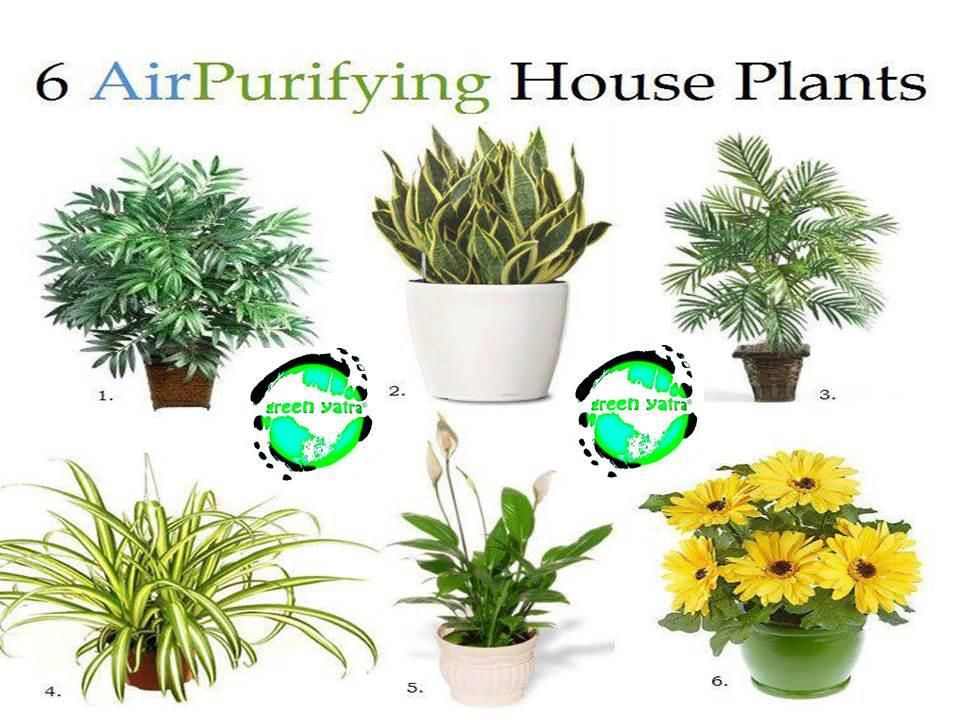
3. Parlor Palm (Chamaedorea Elegans)
The beautiful parlor palm, also known as Bella palm or tabletop palm, has long, shiny green leaves. Parlor palms are known to remove harmful chemicals such as benzene and trichloroethylene from the air.
Maintenance Tips: You will be pleased to learn that it is a low-maintenance plant that can adapt to various lighting conditions. It does best in bright, filtered light with little watering. It is better to underwater your parlor palm than to overwater it. Expect to water them every 1-2 weeks.
Toxicity: Parlor palms are also pet safe, so you can keep them without worrying about your pet’s health.
4. Areca Palm (Dypsis lutescens)
The areca palm is a popular air-purifying houseplant capable of removing formaldehyde, xylene, benzene, trichloroethylene, and carbon monoxide from the air. Its slender, arching fronds make it a beautiful addition to any room.
Maintenance Tips: Areca palms prefer bright, filtered sunlight.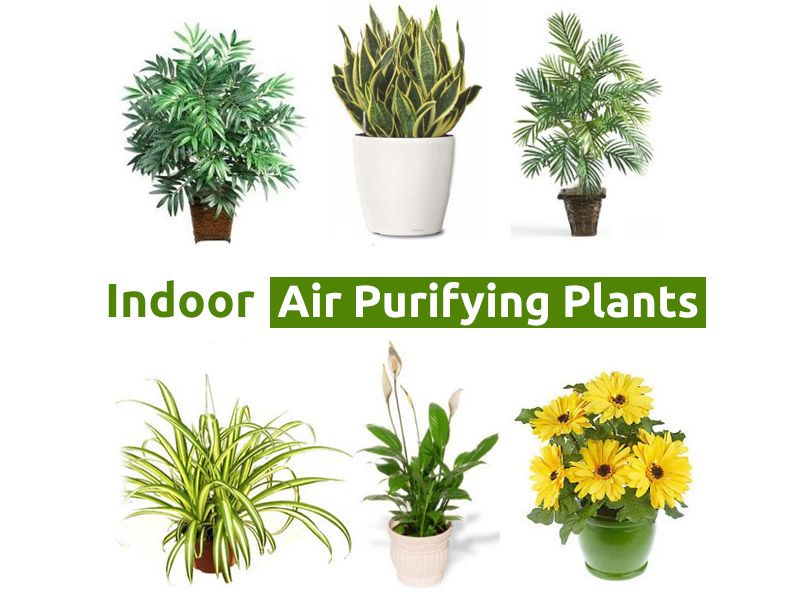 Harsh direct sunlight can scorch the foliage. They prefer moist soil; however, make sure you let the soil dry slightly between waterings as they dislike waterlogged soil. They do best in temperatures between 65 to 75 degrees.
Harsh direct sunlight can scorch the foliage. They prefer moist soil; however, make sure you let the soil dry slightly between waterings as they dislike waterlogged soil. They do best in temperatures between 65 to 75 degrees.
Toxicity: Apart from being a stunning design addition, the areca palm is also pet safe, so you can rest easy knowing your pet is in no danger.
5. Gerbera Daisy (Gerbera Jamesonii)
Another plant that was highly rated in NASA’s 1989 Clean Air Study is the Gerbera Daisy. In 24 hours, this fantastic air-purifying plant cleaned the air dramatically. It removed half of the airborne formaldehyde, 67% benzene, and 35% trichloroethylene.
Maintenance Tips: Gerbera daisies do best in a place with moderate sunlight. Although they prefer bright sunlight, placing them in direct sunlight can end up scorching the leaves. Gerbera daisies do need to be watered regularly. Just water them when the soil has dried an inch or two below the surface.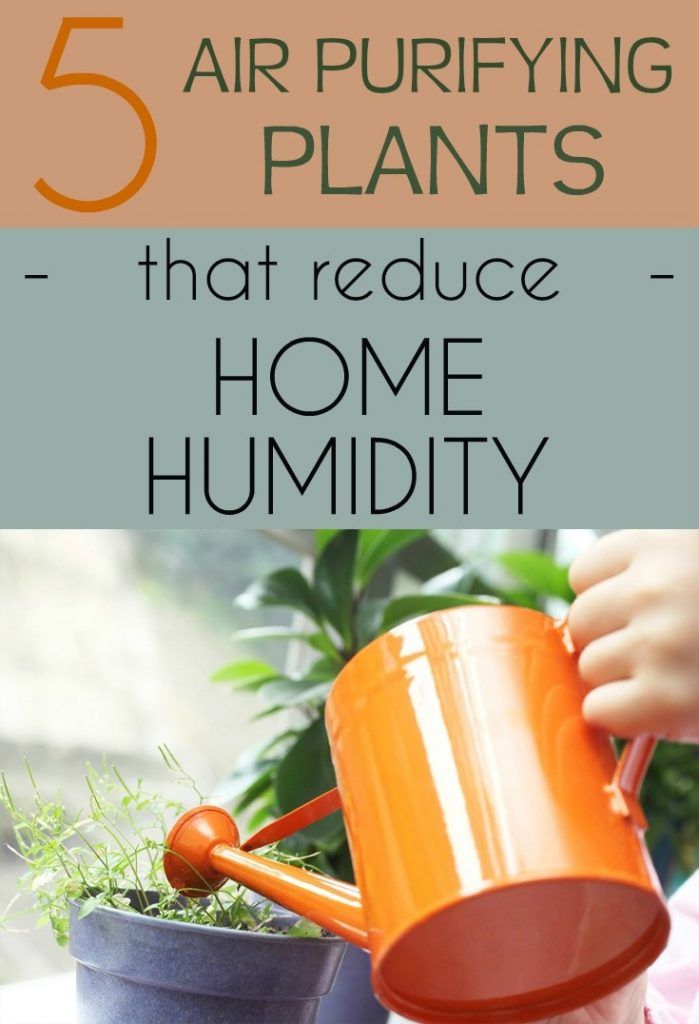
Toxicity: Gerbera Daisies are also pet safe, so you can add these bright flowers to your home without worrying about your pet’s health.
6. Dragon Tree (Dracaena Dorado)
Plants belonging to the Dracaena family are also among the best air-purifying plants in general. The dragon tree is no exception. It excels at removing benzene, xylene, trichloroethylene, formaldehyde, and carbon dioxide from the air.
Maintenance Tips: The dragon tree is an excellent indoor plant due to its hardy nature. Dragon trees prefer indirect, bright sunlight, and generally, they do best if they receive around 10 hours of it. Dragon trees are susceptible to root rot if left in standing water. Allow the soil to partially dry before watering them again.
Toxicity: The dragon tree is toxic to pets and should be avoided by pet owners.
7. Mother-in-Law’s Tongue (Dracaena trifasciata)
Mother-in-law’s tongue, also known as snake plant or St. George’s sword, is another brilliant air-purifying plant from the Dracaena family. It can remove a substantial amount of formaldehyde and benzene.
George’s sword, is another brilliant air-purifying plant from the Dracaena family. It can remove a substantial amount of formaldehyde and benzene.
Maintenance Tips: A hardy plant, mother-in-law’s tongue can survive in a variety of lighting conditions. It is also drought-resistant and does not react kindly to overwatering. Water only when the soil feels dry. In warmer months, it only needs to be watered every 3-4 weeks.
Toxicity: Mother-in-law’s tongue contains saponins, a toxic substance for cats and dogs, so households with pets should look for another houseplant.
8. Pot Mum (Chrysanthemum Morifolium)
The pot mum, also known as the florist’s mum, isn’t considered one of the best air-purifying indoor plants for nothing. According to NASA’s Clean Air Study, the small yet mighty chrysanthemum can remove 61% formaldehyde, 53% benzene, and 41.2% trichloroethylene.
Maintenance Tips: This colorful houseplant is widely available and only needs a bit of tender loving care to thrive.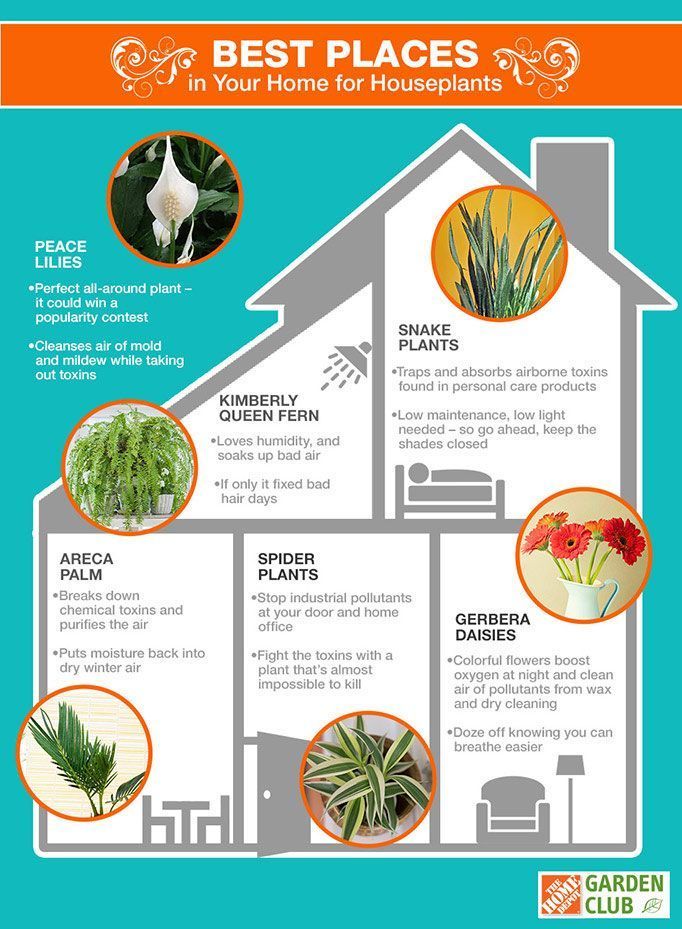 Pot mums love sunlight and need at least 4 hours of direct sunlight a day. They are also thirsty plants and need to be watered regularly. Check the top 1 inch of the soil; they need to be watered if it feels dry. Water them until it starts to drain from the bottom of the pot.
Pot mums love sunlight and need at least 4 hours of direct sunlight a day. They are also thirsty plants and need to be watered regularly. Check the top 1 inch of the soil; they need to be watered if it feels dry. Water them until it starts to drain from the bottom of the pot.
Toxicity: It’s important to keep in mind that pot mums are not animal friendly. As such, they should only be considered by households with no pets.
9. Peace Lily (Spathiphyllum)
The peace lily is known for being a superstar when it comes to removing benzene from the air. In addition, its beautiful white flowers and light scent make this powerful air-purifying plant an attractive option for homeowners.
Maintenance Tips: Peace lilies need bright, filtered light and prefer warmer humid climates. Therefore, they need to be watered and misted frequently in the summers. You can get away with less watering in the winters but be careful not to let the soil dry out.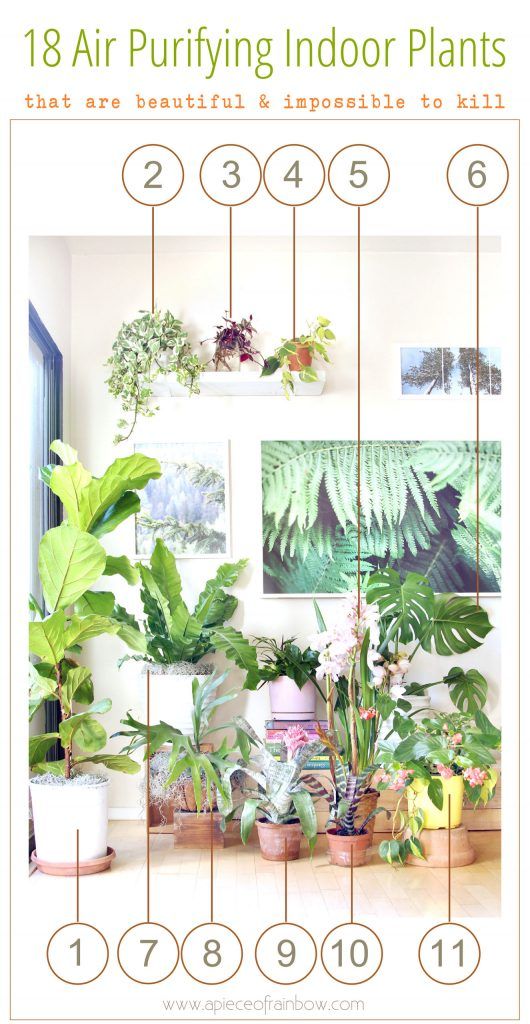
Toxicity: Unfortunately, peace lilies are not pet safe. If you are eager to plant peace lilies, make sure they are in an area where your pets cannot reach them.
10. Flamingo Lily (Anthurium Andraeanum)
The flamingo lily is a colorful air-purifying houseplant that is a feast for the eyes. Apart from being beautiful to look at, it can remove airborne formaldehyde, ammonia, toluene, and xylene.
Maintenance Tips: Unfortunately, the flamingo lily is not the lowest maintenance plant there is. You need a bit of a green thumb to grow this temperamental plant. Native to Central and South America, the flamingo lily favors high humidity and temperatures above 70 degrees. Direct sunlight burns their leaves, so place them in bright, indirect light. Let the soil dry slightly between waterings.
Toxicity: The flamingo lily is toxic to humans and pets, hence it should be avoided in the household with pets and children.
11.
 Spider Plant (Chlorophytum Comosum)
Spider Plant (Chlorophytum Comosum)The spider plant, also known as ribbon plant or spider ivy, has slender, arching lime-green leaves and can remove harmful pollutants like carbon monoxide, formaldehyde, xylene, and benzene from the air. It’s a popular air-purifying indoor plant, thanks to its gorgeous leaves and air filtering capabilities.
Maintenance Tips: The spider plant is also one of the lowest maintenance houseplants. They prefer indirect light and can even thrive in low light conditions. However, make sure you keep them out of direct sunlight as it can scorch their leaves. In addition, they dislike soggy soil and only need a light spritzing occasionally.
Toxicity: The spider plant is also one of the few houseplants that are nontoxic to animals.
12. Mass Cane (Dracaena Massangeana)
Another air-purifying powerhouse, the mass cane, can remove up to 70% of airborne formaldehyde. These low-maintenance plants resemble palm trees a lot, which is why they are sometimes called “false palms. ”
”
Maintenance Tips: They grow best near windows with filtered sunlight. Direct sunlight can cause their leaves to burn and wilt. They need a moderate amount of water and require humidity levels between 40-50%. Soil that is too wet or dry causes health issues in the plant.
Toxicity: Keep in mind; the Dracaena Massangeana is not a pet-friendly plant. It is toxic to both cats and dogs.
13. Rubber Tree (Ficus Elastica)
Used for making rubber before synthetics were invented, the rubber plant is an air-purifying wonder. It excels at removing formaldehyde from the air. Apart from that, it produces tons of oxygen and eliminates bacteria and mold spores from the air. These features make it a worthy addition to your collection of air-purifying plants.
Maintenance Tips: Though it is generally an easy-to-care plant, there are some maintenance tips you need to know. The rubber tree thrives in medium to bright indirect light.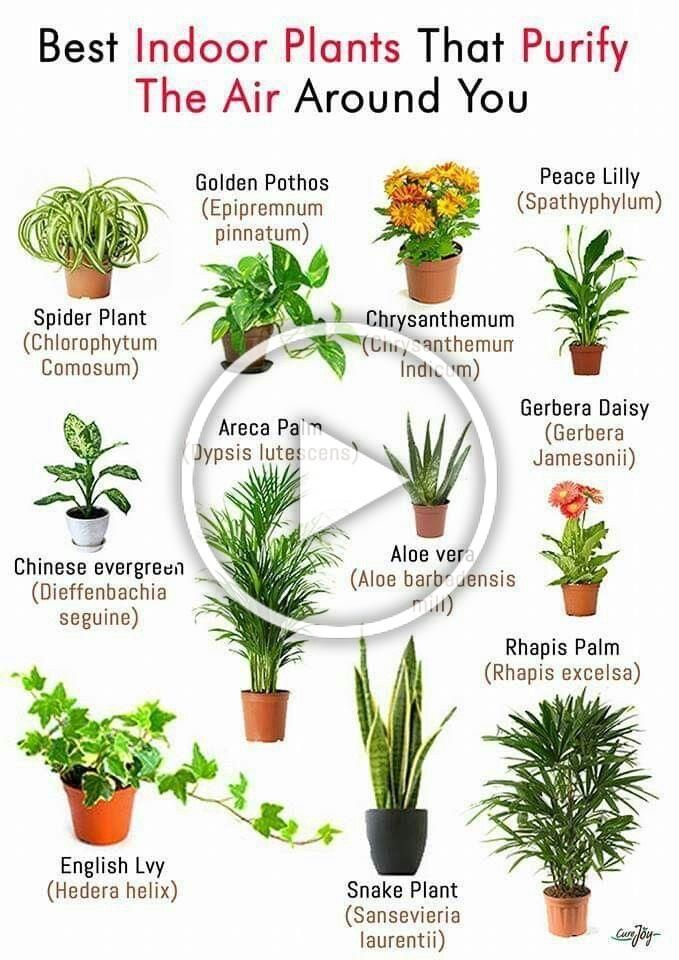 Water every 1-2 weeks and allow the soil to dry out between waterings. The rubber plant also dislikes very cold temperatures, so don’t let temperatures drop below 60 degrees.
Water every 1-2 weeks and allow the soil to dry out between waterings. The rubber plant also dislikes very cold temperatures, so don’t let temperatures drop below 60 degrees.
Toxicity: The rubber tree is mildly toxic to both humans and pets. If you decide to grow one, make sure it is out of reach of animals and children.
14. Heart Leaf Philodendron (Philodendron Oxycardium)
With glossy, heart-shaped leaves, the heartleaf philodendron will be a worthy addition to your air-purifying indoor plant collection. These trailing plants can be planted in hanging baskets or trained to climb up a trellis or a pole.
Maintenance Tips: The heartleaf philodendron only needs medium, indirect light and should be watered every 1-2 weeks. Allow the soil to dry out between waterings and increase the frequency of watering as light increases.
Toxicity: It is toxic to humans and pets, so households with pets or children should avoid keeping one.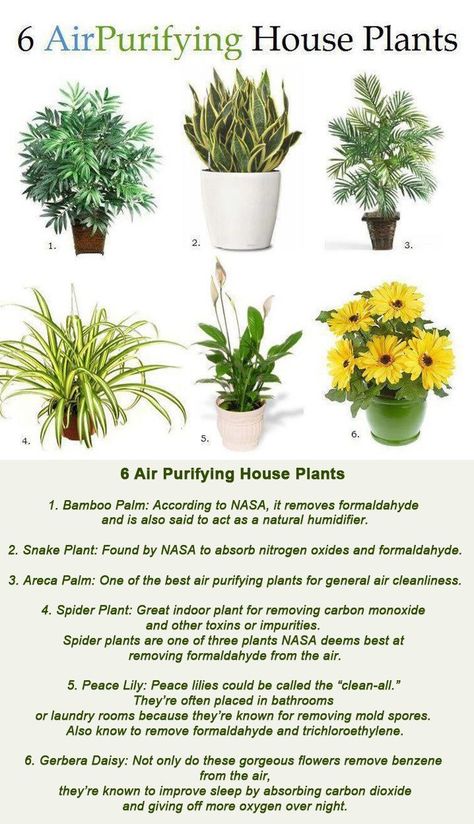
15. Aloe Vera
Aloe vera is well known for its skin-soothing properties. However, you may be surprised to find out that it is just as good for the air as it is for your skin. This air-purifying plant removes benzene, formaldehyde, and carbon monoxide from the air.
Maintenance Tips: Place aloe vera in a spot with bright, indirect sunlight as direct sunlight can burn its leaves. Allow the soil to dry out completely between waterings. Most aloes do not need any water in the winter, so just moisten their soil a little bit.
Toxicity: Unfortunately, aloe vera is toxic to cats and dogs, and its thorny leaves can be dangerous.
16. Fittonia (Fittonia Argyroneura)
Otherwise known as the nerve plant or mosaic plant, Fittonia is a popular air-purifying houseplant due to its lush, patterned leaves. Not only is it a beautiful plant, but it also has some amazing air-purifying benefits. It is effective at removing benzene, toluene, and trichloroethylene from the air.
Maintenance Tips: Unlike the other plants on this list, fittonia is somewhat temperamental and needs a lot of attention. They require high humidity and, as such, do well in bathrooms or terrariums. They prefer bright, indirect sunlight and lots of water. However, make sure the pot has appropriate drainage since standing water can cause yellowed, limp leaves.
Toxicity: Good news for pet owners, fittonia is one of the few air-purifying plants that is completely pet safe.
17. Chinese Evergreen (Aglaonema Modestum)
Famous for being near indestructible, the Chinese evergreen is the best air-purifying plant for beginners. They come in a wide variety of colors and filter toxins such as benzene, formaldehyde, trichloroethylene.
Maintenance Tips: Chinese evergreens prefer low light conditions though they can also thrive in bright, indirect light. These plants also do better in warmer, humid conditions. The soil should be moist but wait for the top two inches to dry out before watering again.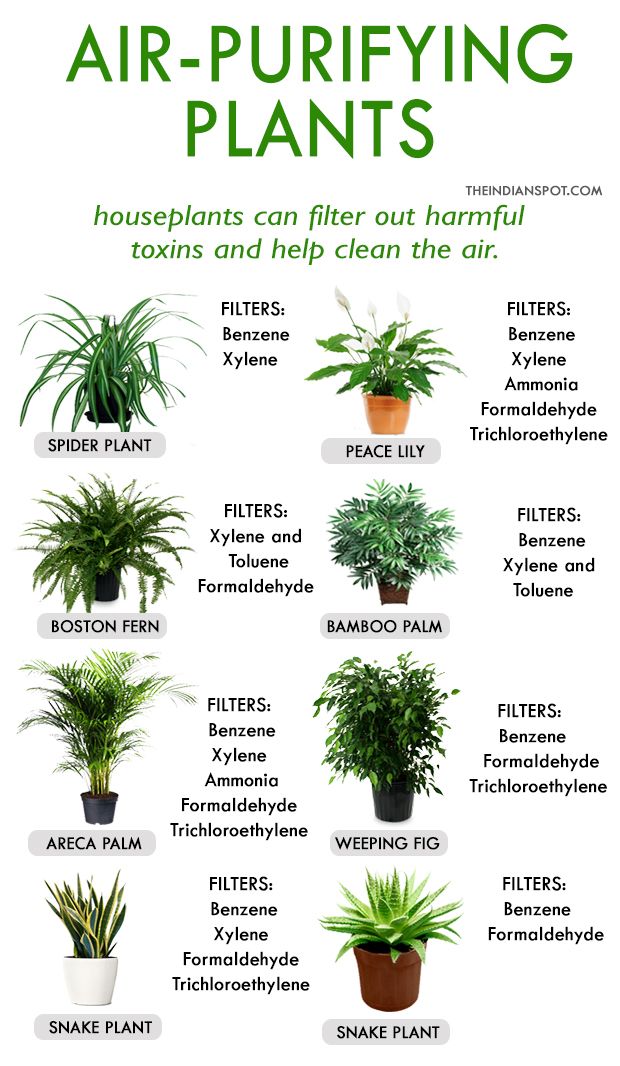
Toxicity: Unfortunately, this hardy plant is not pet safe and should be avoided by pet owners.
18. Weeping Fig (Ficus Benjamina)
Also known as the ficus tree or Benjamin fig, this common houseplant is a potent air purifier. With its slender, arching branches, it is a popular aesthetic choice for home decor.
Maintenance Tips: Indoors, the weeping fig prefers plenty of indirect sunlight with the occasional dose of direct sunlight. The weeping fig loves moisture and you should water them regularly. However, do not let it sit in water as it may develop root rot. Since it is a tropical plant, it prefers warmer temperatures and higher humidity. You can use a humidifier to increase humidity or mist the leaves regularly.
Toxicity: The weeping fig is toxic to cats and dogs and should be avoided by pet owners.
19. Poinsettia (Euphorbia Pulcherrima)
A popular plant during the holiday season, poinsettias are a good option all year round too.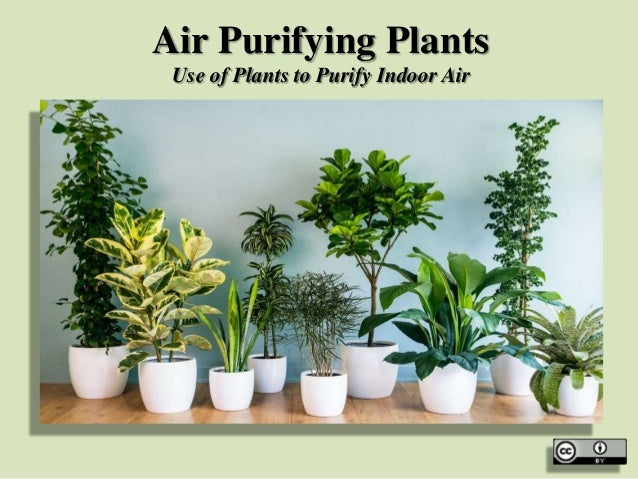 The beautiful bright pink blooms are a sight for sore eyes, and their ability to remove trace formaldehyde from the air makes them a health-conscious choice too.
The beautiful bright pink blooms are a sight for sore eyes, and their ability to remove trace formaldehyde from the air makes them a health-conscious choice too.
Maintenance Tips: Poinsettias love the sun, giving them 6-8 hours of bright, indirect sunlight is essential. Direct sunlight can burn their leaves. Water them whenever the surface feels dry to the touch; however, don’t let the roots sit in water. Poinsettias are very sensitive to the cold and prefer temperatures between 65 to 75 degrees.
Toxicity: Though poinsettia is mildly toxic to pets, the side effects are not usually severe. According to the ASPCA, its toxicity is overrated. However, you may still want to pick another air-purifying indoor plant to be on the safe side. If you do decide to keep one, place it where your pet cannot reach it.
20. Boston Fern (Nephrolepis Exaltata)
The Boston fern, also known as the sword fern, is a popular houseplant choice due to its lush green arching fronds and air purifying abilities. It removes xylene, toluene, benzene, and formaldehyde from the air.
It removes xylene, toluene, benzene, and formaldehyde from the air.
Maintenance Tips: Boston ferns prefer bright, indirect light as direct sunlight can burn their fronds. The soil always needs to be lightly moist, not soggy. They need humidity levels above 80% and dislike extreme temperatures.
Toxicity: The good news for pet owners is that the Boston fern is non-toxic for pets. So you can let your inner gardener free without worrying about your pet’s health.
21. Golden Pothos (Epipremnum Aureum)
This leafy vine looks beautiful hung midair or placed on a shelf. Also known as satin or silk pothos, it is one of the lowest maintenance air-purifying plants. It filters a variety of toxins, including toluene, formaldehyde, xylene, trichloroethylene, and benzene.
Maintenance Tips: The golden pothos thrives in bright, indirect light but can also adapt to low light conditions. Water your pothos every 1-2 weeks and allow the soil to dry out between waterings.
Toxicity: The golden pothos is toxic to cats and dogs, so pet owners should consider other pet-safe houseplants.
Coupling Air Purifying Plants With an Air Purifier
If you decide to get an air-purifying indoor plant, keep in mind that one plant alone can’t significantly improve indoor air quality. However, it can aid and help. To purify the air inside your house to a great extent, you may have to look at other measures to improve indoor air quality.
A great way to purify the air in your home is to complement air purifying plants with a high-quality air purifier. While air-purifying plants can remove harmful gases, they cannot remove pollen and bacteria. Combining air purifying plants with an air purifier can increase oxygen content while removing harmful pollutants, pollen, and pet dander.
Pro Tip: You need to keep a good eye on humidity levels when taking care of air-purifying house plants. While it can get tiring, we have a smart solution for you. Use smart AC controllers or smart thermostats to control humidity indoors. Features such as Comfy Mode allow you to set humidity ranges, and your air conditioning will turn on/off automatically as required.
Use smart AC controllers or smart thermostats to control humidity indoors. Features such as Comfy Mode allow you to set humidity ranges, and your air conditioning will turn on/off automatically as required.
Houseplants are a fantastic way to bring some nature into your busy lives. Caring for plants is therapeutic and fosters a new appreciation for all things green. Bringing any one of these plants into your life will be a decision you will never regret. Happy gardening!
Recommended For You
Make your mini-split, window, or portable air conditioner smart.
Control your air conditioner from anywhere, anytime using Cielo Breez smart AC controllers.
Shop Now
Recomended for you
WiFi Thermostats – Are They Worth The Investment?
December 9, 2022|11 mins
Unveiling Cielo Breez Lite, The Sleekest Smart AC Controller!
December 12, 2022|5 mins
Deloitte Names Cielo As North America’s 118th Fastest-Growing Technology Company
December 8, 2022|3 mins
What Are HVAC UV Lights For?
November 10, 2022|5 mins
Company
Get the latest
Contact Us
+1 425 529 5775
Redmond, WA 98052
© 2022 Cielo WiGle Inc.
New GM houseplant purifies the air as effectively as 30 purifiers
Neoplants has modified the pothos plant to slightly enhance the plant's natural air-purifying properties.
A Parisian company has created a genetically modified houseplant that can effectively purify the air in an apartment or private house. The plant uses natural cleansing properties that have been developed as a result of centuries of evolution. Thus, the new plant is not only part of the interior of the room, but also actively cleans the air in the room, and according to French biologists, it does it better than 30 air purifiers.
The company is called Neoplants and claims to have modified the pothos plant's root microbiome, resulting in a boost to the plant's natural air-purifying properties. The genetically modified houseplant is called Neo P1 and has recently appeared on the flower market.
According to French scientists, indoor plants not only improve mood and help reduce anxiety, but also purify the air thanks to their natural purifying properties.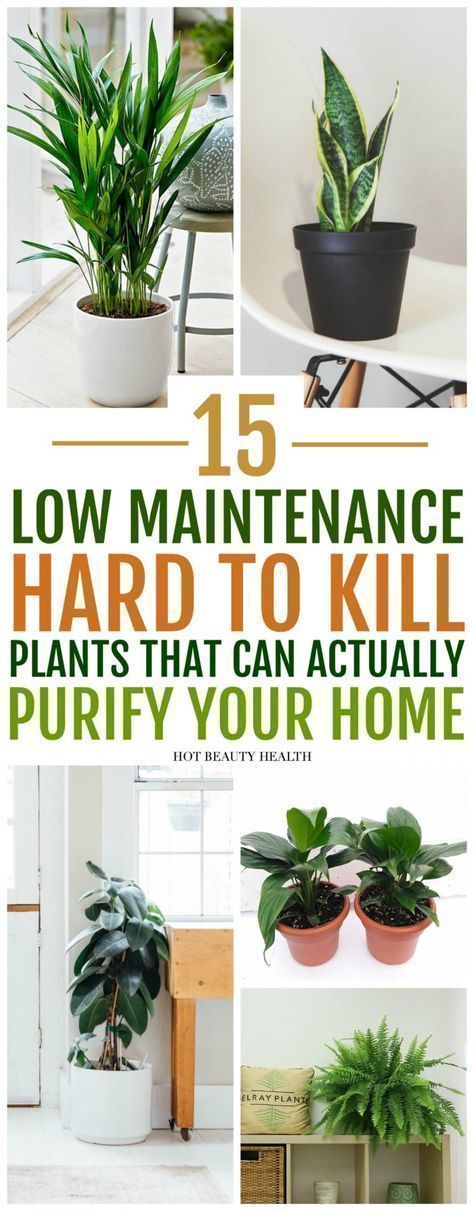 However, with the new genetically modified houseplant, growers will get much better air purification than conventional plants. Neoplants claims that Neo P1 is 30 times more effective than NASA's best plants that clean the air in space.
However, with the new genetically modified houseplant, growers will get much better air purification than conventional plants. Neoplants claims that Neo P1 is 30 times more effective than NASA's best plants that clean the air in space.
But how exactly does this genetically modified houseplant work better than an air purifier?
Well, for starters, plants are better at clearing the air of volatile organic compounds, which are highly reactive chemicals found in cleaning products, building materials, and paints. It is well known that volatile organic compounds are harmful to human health and can cause irritation in the human body.
Indoor plants provide natural air purification in the home.
Although air purifiers also perform this function, they usually do not completely neutralize these harmful compounds, which means that they are never completely removed from the air. And plants like this genetically engineered Neo P1 are better at neutralizing VOCs, so having houseplants in your home can help improve air quality.
Neoplants started with pothos because it is one of the most popular plants in North America. But the job was not easy, as the company needed to map the entire genome of this plant. The molecular biologist and the company's chief technology officer equated the job with assembling an airplane while in flight. But the work was done for good reason and the new genetically modified houseplant is better at eliminating volatile organic compounds.
In addition, Neoplants claims that the efficiency of air purification by a houseplant is the only thing the company has touched. It neither grows faster nor is it more resistant to pesticides than conventional plants. Genetically modified houseplant will be sold at a price of 179dollars, making it more expensive than most regular houseplants.
recommendations
But given that it acts as one of the best air purifiers, the price is justified.
This material was written by a site visitor and has been rewarded.
Natural air purifiers
Clean air in the rooms where we live, study, work or play is very important for our comfortable life. Polluted air leads to diseases! What are the causes of diseases? Here are some of them:
-
bacteria, mold, dust, carbon dioxide contained in the air;
-
Toxic chemicals (such as formaldehyde) that release the walls of our homes and some furniture.
Did you know that indoor plants can play the role of a natural air purifier? Of course, while studying plants in biology classes, you learned that plants absorb carbon dioxide from the air and release oxygen, which is necessary for living beings to breathe. However, some of the indoor plants can work as an environmentally friendly natural filter, purifying the air not only from carbon dioxide, but also from other harmful components. Plant such a plant, take care of it, and it will make your life better!
Nine plants that can purify indoor air from harmful impurities
-
Chlorophytum.

This is a simple and unpretentious plant that does not require special care. It is widely used in indoor floriculture. Chlorophytum effectively absorbs all the chemicals that you spray when you put things in order in the apartment.
-
Indoor chrysanthemum.
It is this plant that is used to purify the air in the offices of the NASA space agency. Chrysanthemums are able to effectively absorb ammonia, benzene and formaldehyde from the air in any room.
-
Dracaena.
Dracaena is excellent at removing benzene, trichlorethylene and xylene from the air. Be aware that these plants are slightly toxic to cats and dogs. Therefore, if pets live in a small apartment, you should not use dracaena.
-
Ficus.
The most popular mini tree is a good air purifier. If you put it in a large pot, the ficus can grow to an impressive size.
If you put it in a large pot, the ficus can grow to an impressive size.
-
Spathiphyllum.
This plant has very beautiful flowers and is very unpretentious. Spathiphyllums remove ammonia, benzene, formaldehyde and trichlorethylene from the air.
-
Nephrolepis (fern).
This plant is very hygrophilous and prefers reflected light. Nephrolepis cleans the air from the pollutant xylene.
-
Sansevieria.
These natural filters require almost no maintenance. They need to be watered about once a month: they like dry conditions. They don't need a lot of sunlight either.
-
Hamedorea (Bamboo palm).
This is the world's best plant for removing formaldehyde from the air. By placing a young plant on a windowsill where the sun shines, you can get a palm tree up to 3 meters high and fresh air.